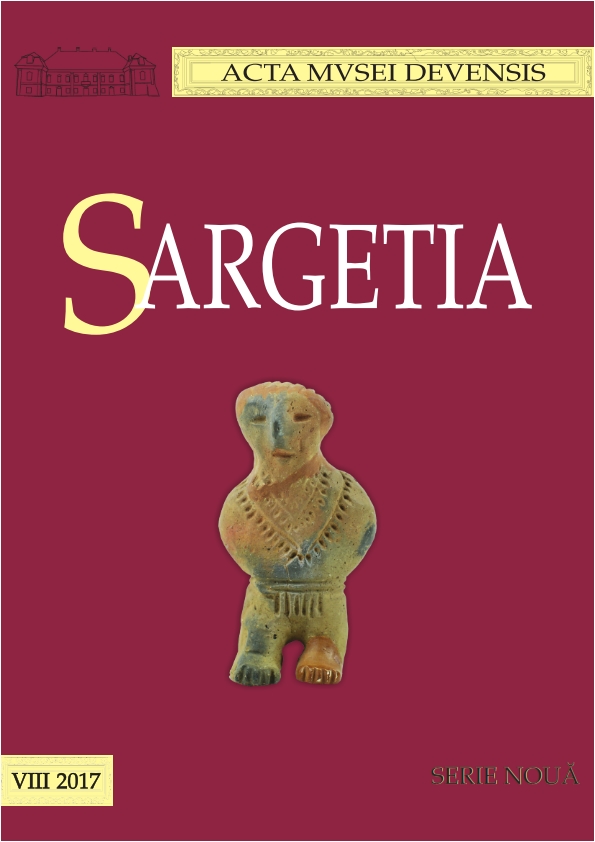Contribuţii la dieta comunităţilor Otomani.
Analiza macroresturilor vegetale recuperate din situl de la Carei – Bobald
Contribution to the Vegetal Diet of Otomani Communities.
Analysis of Macroremains Recovered from Carei – Bobald site
Author(s): Elena Beatrice Ciută, Zsolt MolnárSubject(s): History, Archaeology
Published by: Editura Altip
Keywords: north-western Romania; Otomani culture; Bronze Age; vegetal macroremains
Summary/Abstract: The aim of the study is to present recent discoveries of vegetal macroremains recovered from the Carei – Bobald site during the archaeological campaigns performed in 2013-2016 (Pl. I-II). The site from Carei – Bobald has provided in the last years a series of important discoveries regarding the vegetal diet of inhabitants who lived here. The archaeological excavation carried out in this site has revealed that the area was populated with Otomani culture bearers. The Otomani culture belongs to the Bronze Age, more specifically to the Middle Bronze Age (Pl. III-V, VI/1). The charred macroremains were recovered mainly from the houses area where were performed domestic activities (floor, hearth). The most predominant cereal is the spelt wheat (Pl. VIII-IX). It is worth to mention again the rare discovery during 2013 campaign of few carbonized bread fragments. It is very probably that the bread was made from spelt flour because of its predominant occurrence within wheat species in the Carei – Bobald site. The spelt was the predominant cereal during Bronze Age. After the flotation and selection operations, were recovered a sum of 7116 charred macroremains (Pl. VI/2, VII). During 2013 campaign, were analysed 2881 seeds of Cerealia, of which 2660 belong to Triticum dicoccum species. And from 2016 were identified 3174 seeds of Cerealia, of which 3074 belong to Triticum spelta. Most of charred seeds were sampled from C 4 counting 6009 seeds, while from C 1 were sampled 1102 seeds. Most of seeds have been attributed to Triticum species, being a crop with pure grains without weeds, which made us conclude that it was a cleaned harvest or a crop without weeds. As a primary conclusion, we may say that wheat spelt was preferred by the inhabitans who lived here (Pl. VIII-IX), follwed by Triticum dicoccum and by far the Triticum monococcum. The main conclusion emerging from the 2016 research is that the tell was permanently inhabited until the Late Bronze Age. There was no interruption between the successive levels of culture, revealed by the ceramic material discovered which denoted a successive chronology of the last settlements attributed to some of the Bronze Age communities on this site (Pl. III-V). Even so, we may say that on the 156 sqm excavated area there are distinguished two wall collapsed zones (Cx 14), in C 1 and C 2 the adobe concentrations are resulting from the burned of the large building with three open hearts arranged on the clay floor; and also with two portable hearts. One hearth was discovered in C 1 during 2013 campaign and was half cut/destroyed by a feature from the upper level, and the second one was found in the C 4 box being under the crashed walls, totaling about 6-7 m in between. It is very probably that it belonged to a single dwelling unit. The habitation was dated between 1750-1680 BC on the cereal carbonized seeds (sample AMS DeA 8287). The extremely rich archaeological material (animal bones, antler tools, quernstone fragments, ceramic fragments) indicates an intense presence in this area. Consequently, it is possible to sketch a household consisting of one or two surface dwellings, possibly with an annex.
Journal: Sargetia. Acta Musei Devensis
- Issue Year: 2017
- Issue No: 8
- Page Range: 11-27
- Page Count: 17
- Language: Romanian

